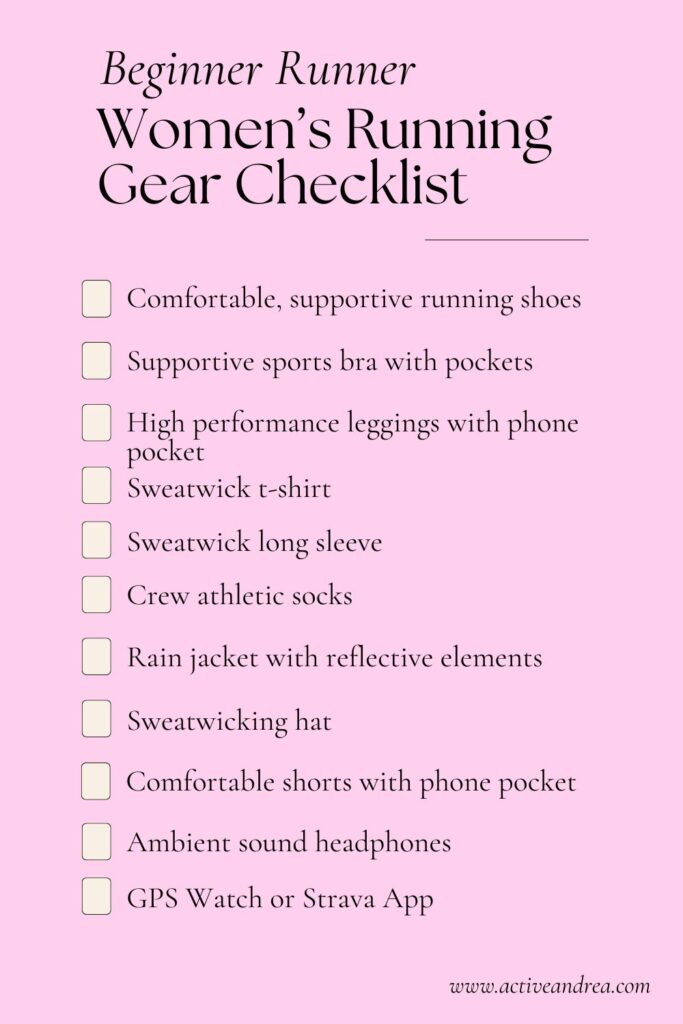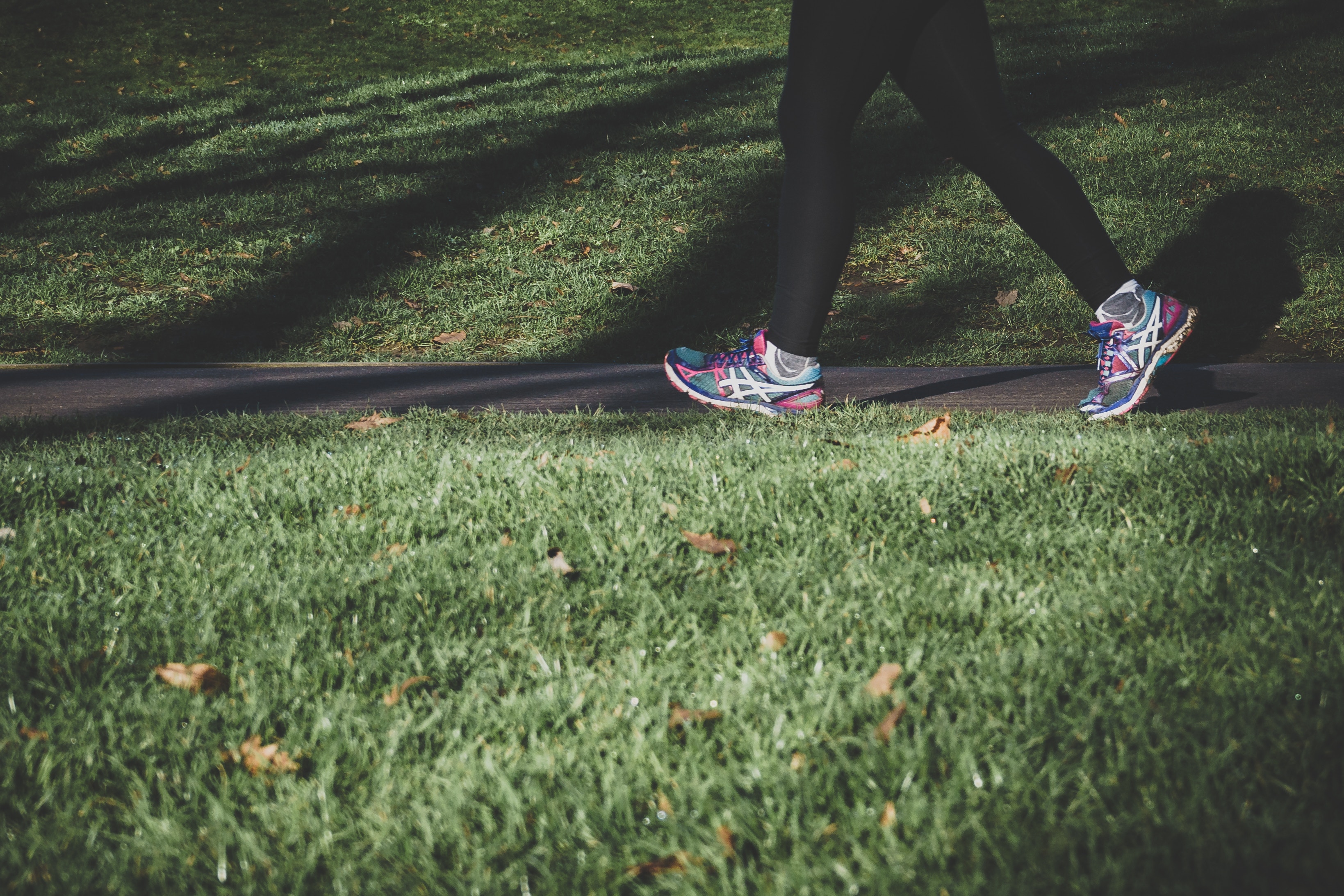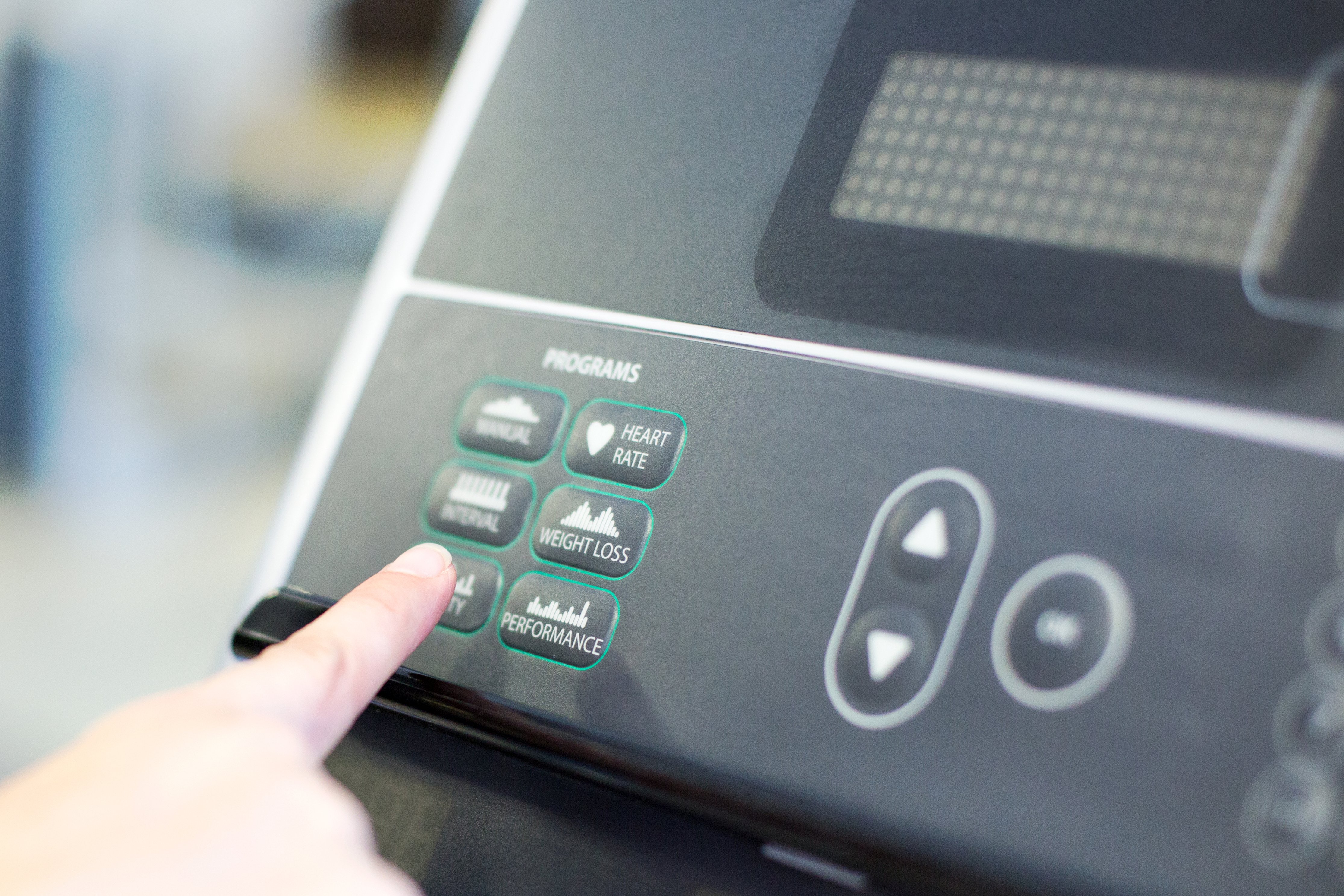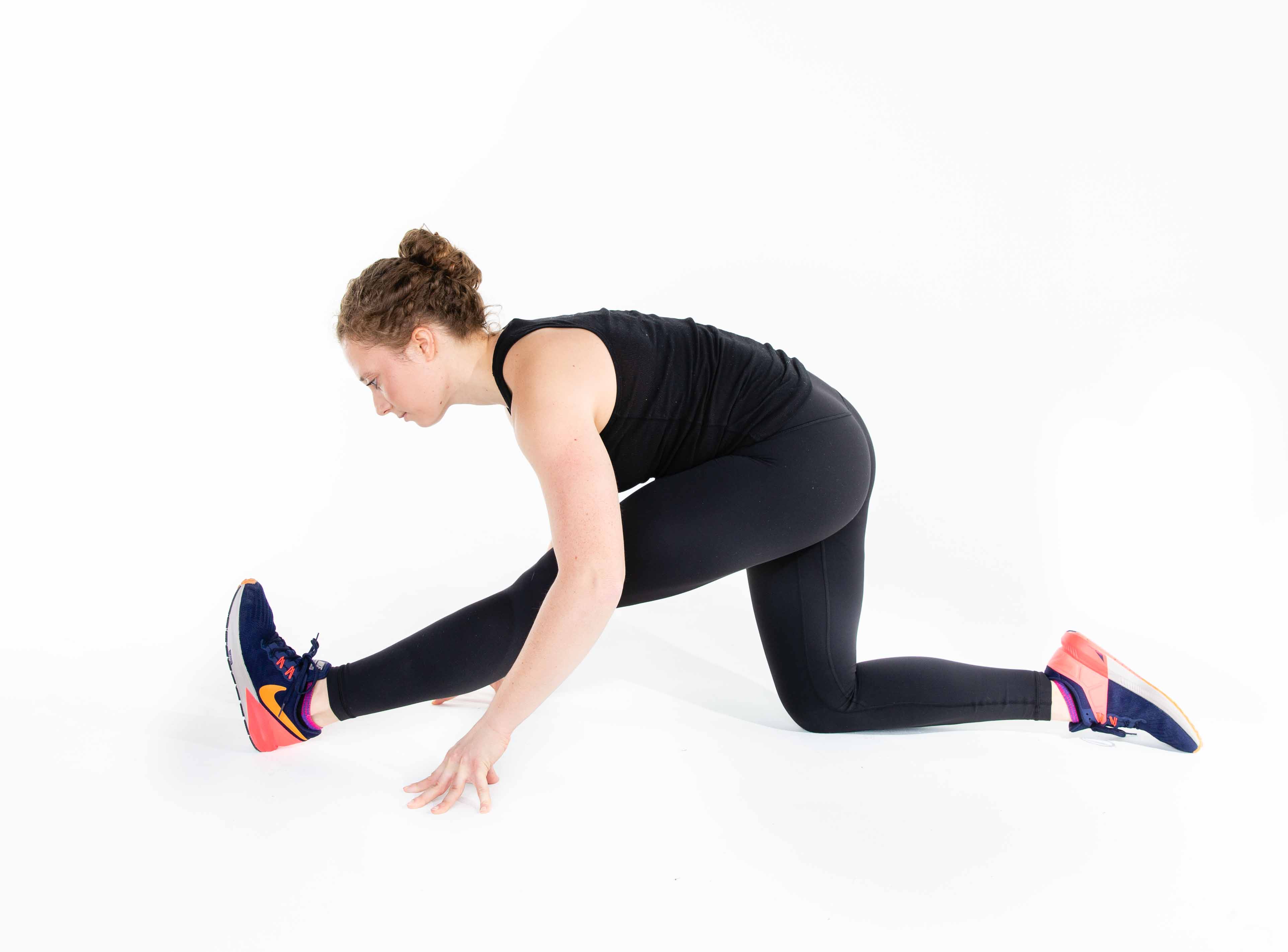So you want to be a runner, eh? Well, you’re in luck! This is the ultimate guide for beginner runners.
But first: yay!! Welcome to this crazy, awesome sport. We’re so glad to have you.
But let’s be honest—starting a running routine can feel intimidating. You might worry about looking awkward, getting out of breath quickly, or even injuring yourself. Perhaps you’ve tried before, only to give up after a few painful attempts. The good news is that these concerns are completely normal, and with the right approach, anyone—yes, even you—can become a runner.
In this post we’ll talk about:
This guide is designed specifically for true beginners. No prior running experience or base fitness level is assumed here. Instead, we’ll build from the ground up with gentle, progressive steps that respect your current abilities while gradually expanding your capabilities.
Okay, ready? Let’s learn how to start running as a beginner.
Before You Start
Before your start your running journey, you have to make sure you have the right gear and expectations.
Importance of Proper Footwear and Basic Gear
While running doesn’t require much equipment, investing in proper running shoes is non-negotiable. Running-specific shoes provide crucial support and cushioning that protect your feet, knees, and back from the repetitive impact of running.
Visit a specialty running store if possible, where staff can analyze your gait and recommend shoes that complement your specific foot structure and running style. Expect to spend between $80-$150 for quality running shoes—an investment in preventing future injuries.
The #1 thing to focus on for running shoes? Picking the shoe that feels the most comfortable.
If you have a neutral foot, here are the most popular running shoes from the biggest running brands:
For clothing, choose moisture-wicking fabrics that move with your body. Cotton absorbs sweat and can cause chafing and discomfort. These are some of my favorite items:




Other helpful but optional items include:
- A running watch or smartphone app to track your progress. I use the Garmin Venu and love it.
- A comfortable hat and sunglasses for sun protection
- Reflective jacket or vest if running in low light
- A small water bottle for longer runs

Medical Considerations and When to Consult a Doctor
Before beginning any new exercise program, consider your current health status. While most healthy adults can safely start a gentle running routine, consult your doctor first if you:
- Have heart disease, high blood pressure, or other cardiovascular conditions
- Have joint problems, particularly in the knees, hips, or back
- Are significantly overweight
- Are over 40 and have been sedentary for several years
- Have any chronic health condition
- Experience chest pain, severe shortness of breath, or dizziness during physical activity
These precautions aren’t meant to discourage you but to ensure you start safely as a beginner runner.
Setting Realistic Expectations
One of the biggest reasons beginners abandon running is unrealistic expectations. Remember these key points:
- Improvement takes time—expect weeks and months, not days
- Discomfort is normal when starting; pain is not. Stop if you have pain!
- Walking is absolutely a legitimate part of becoming a runner (and, in fact, a key part of running!)
- Everyone progresses at different rates
- Even a short run/walk session counts as success
It can be helpful to have a goal for your first 30 days of running, such as “complete all runs in my 30-day training plan” or “complete 300 minutes of exercise over the next 30 days” (roughly 30 minutes of exercise 3x per week). Goals like this are SMART: specific, measurable, attainable, relevant, and time-bound.
Creating Your Beginner Running Plan
The Run/Walk Method Explained
The run/walk method, popularized by Olympian and running coach Jeff Galloway, is the most effective approach for beginner runners. Instead of trying to run continuously until exhaustion (which often leads to injury and discouragement), you’ll alternate between running and walking.
This approach:
- Reduces injury risk by gradually building strength and endurance
- Makes running mentally accessible—you only need to run for short periods
- Allows your body to adapt progressively to running demands
- Keeps your heart rate from spiking too high
- Lets you go farther than you could by running alone
The key is to walk before you’re completely exhausted. These aren’t “failure walks”—they’re strategic recovery periods that allow you to cover more distance with better form.
Sample 4-Week Beginner Runner Schedule
Week 1: Establish the habit
- Workout 1: 30 minutes: 1 minute of running followed by 2 minutes of walking, repeated 10 times
- Workout 2: 20 minutes: 1 minute of running followed by 4 minutes of walking, repeated 4 times
- Workout 3: 28 minutes: 1:30 minutes of running followed by 2:30 minutes of walking, repeated 7 times
- Frequency: Pick 3 non-consecutive days to do these workouts! (e.g., Monday, Wednesday, Friday)
- Focus: Completing the full time, regardless of distance
Week 2: Build endurance
- Workout 1: 30 minutes total, with 2 minutes of running followed by 2 minutes of walking, repeated 7-8 times
- Workout 2: 30 minutes total, 20 seconds of running followed by 40 seconds of walking, repeated 30 times
- Workout 3: 30 minutes total, 15 seconds of running followed by 45 seconds of walking, repeated 30 times
- Frequency: 3 non-consecutive days
- Focus: Maintaining comfortable breathing during run intervals
Week 3: Extend running time
- Workout 1: 33 minutes total, with 3 minutes of running followed by 2 minutes of walking, repeated 6-7 times
- Workout 2: 28 minutes total, 1:30 minutes of running followed by 2 minutes of walking, repeated 8 times
- Workout 3: 35 minutes total, with 30 seconds of running followed by 30 seconds of walking, repeated 30 times
- Frequency: 3 non-consecutive days
- Focus: Maintaining proper form throughout run intervals
Week 4: Increase endurance
- Workout 1: 35 minutes total, with 5 minutes of running followed by 2 minutes of walking, repeated 5 times
- Workout 2: 4 miles total, with 25 seconds of running followed by 35 seconds of walking
- Workout 3: 3 miles total, with 3 minutes of running followed by 1 minute of walking
- Frequency: 3 non-consecutive days
- Focus: Building confidence in longer running segments
Remember this is a suggested framework—adjust as needed. If a week feels too challenging, repeat it before moving on. Conversely, if it feels too easy, you can cautiously run for more time and walk for less. My biggest tip is to keep the running and walking segments consistent. So, if you start out running for 6 minutes, don’t let that drop as the workout progresses. The idea is to start conservatively because the end of the workout will be harder.
If you’re looking for a good 5k or 10k training plan, I highly recommend checking out this Jeff Galloway book. It has guided training plans for beginner runners to experts, all incorporating the walk-run method.
Importance of Rest Days
Rest days aren’t just for physical recovery—they’re when fitness adaptations actually occur. During rest, your body repairs muscle fibers, strengthens bones and connective tissue, and replenishes energy stores.
As a beginner runner, aim to have at least one rest day between running workouts. This doesn’t mean complete inactivity—light walking, gentle yoga, or stretching can enhance recovery without taxing your system.
Warning signs that you need more rest include:
- Persistent fatigue lasting beyond 24 hours after a run
- Nagging pain (versus normal post-exercise soreness)
- Decreased performance over multiple sessions
- Poor sleep or increased irritability
Remember: Running more isn’t always better. Strategic rest ensures continued progress without setbacks.
Proper Running Form
Basic Form Tips for Beginner Runners
Good running form reduces injury risk and improves efficiency. Focus on these key elements:
Posture
- Stand tall with a slight forward lean from the ankles (not the waist)
- Keep shoulders relaxed and down, not hunched
- Hold your head up with gaze forward about 10-20 feet ahead
Arm Movement
- Bend elbows at approximately 90 degrees
- Swing arms forward and back, not across your body
- Keep hands relaxed, as if holding a delicate chip without crushing it
Foot Strike
- Land midfoot rather than heavily on your heel
- Aim to land underneath your hips to make sure you’re not overstriding
- Imagine you have a glass ceiling over your head, preventing you from bouncing up too high
Don’t try to perfect everything at once. Focus on one element per run, gradually building body awareness.
Related Reads:
Common Mistakes to Avoid
Be mindful of these frequent beginner running errors:
❌ Overstriding: Taking steps that are too long, causing jarring heel strikes.
✅ Solution: Focus on landing with your foot underneath your body, not out in front.
❌ Excessive bouncing: Wasting energy moving up and down rather than forward.
✅ Solution: Think about moving forward, not up.
❌ Tense upper body: Clenched fists, raised shoulders, and rigid arms waste energy.
✅ Solution: Periodically do a quick body scan during your run to release tension.
❌ Too much, too soon: Increasing distance or speed too quickly.
✅ Solution: Follow the 10% rule—don’t increase your weekly mileage by more than 10% at a time.
How Good Form Prevents Injury
Running with poor form is like driving a car with misaligned wheels—it creates unnecessary wear and tear. Good form distributes impact forces more evenly throughout your body, reducing strain on individual structures.
For example:
- Proper foot strike reduces impact forces on knees and hips
- Good posture prevents lower back pain
- Relaxed shoulders prevent neck and upper back tension
- Appropriate cadence reduces impact forces throughout the body
While form adjustments might feel awkward initially, your body will adapt, making running more comfortable and sustainable long-term.
Staying Motivated
Setting Achievable Goals
Effective goals follow the SMART framework: Specific, Measurable, Achievable, Relevant, and Time-bound.
For beginning runners, appropriate goals might include:
- Completing all scheduled workouts for two consecutive weeks
- Running for 5 minutes without stopping by the end of month one
- Participating in a charity 1-mile fun walk/run in three months
Start with process goals (focusing on actions within your control) rather than outcome goals (like weight loss or speed), which can depend on many factors.
Document your goals somewhere visible and share them with at least one supportive person to increase accountability.
Finding Your “Why”
When motivation wanes (and it will), connecting with your deeper purpose for running can reignite your commitment. Take time to identify your personal motivations:
- 🍎Are you running for health reasons, like reducing blood pressure or managing weight?
- 🧠 Is running your mental health medicine, providing stress relief and mood improvement?
- 🏆 Are you seeking personal challenge and the satisfaction of achievement?
- 👪 Do you want to set a positive example for your children or loved ones?
- 🏘️ Is running a way to connect with others or your community?
- 👚 Do you love running clothes and want a reason to buy more? 😛 (it’s the little things!)
Write down your “why” and revisit it when running feels difficult. The most sustaining motivations are usually intrinsic (internal satisfaction) rather than extrinsic (external rewards).
Tracking Progress Effectively
Monitoring your progress provides tangible evidence of improvement, even when it feels slow. Consider tracking:
- Workout completion (simply checking off scheduled runs builds confidence)
- Time spent running versus walking
- Distance covered in your workout time
- How you feel during and after runs (use a 1-10 scale)
- Resting heart rate (which often decreases as fitness improves) (You can track this on the Garmin Venu!)
To track your progress, use a dedicated running app, simple spreadsheet, or physical journal. Personally, I like to write down my exercise in this 5-Year journal which allows me to see my progress year after year. It’s a cool way to reflect on my fitness journey over time.
Review your progress monthly to appreciate how far you’ve come—you’ll likely be surprised by the improvements that happened so gradually you didn’t notice them day-to-day.
Common Beginner Runner Challenges
Dealing with Side Stitches and Minor Discomfort
Side stitches—sharp pain typically under the ribcage—are common for beginner runners. To prevent them:
- Don’t run immediately after eating
- Warm up properly with walking
- Stay well-hydrated throughout the day
- Breathe deeply from your diaphragm rather than taking shallow chest breaths
If a stitch strikes during your run:
- Slow down or walk while maintaining good posture
- Press gently on the affected area
- Practice deep belly breathing
- Raise the arm on the affected side and stretch gently
Other common discomforts include muscle soreness, minor chafing, and temporary fatigue. Most of these resolve with consistent training and basic self-care. However, sharp pain, pain that worsens during your run, or pain that persists after stopping warrants medical attention.
Preventing Common Injuries
Most running injuries result from training errors—particularly doing too much too soon. Follow these prevention strategies:
Shin Splints
- Increase mileage gradually
- Run on softer surfaces like grass, dirt, and woodchips when possible
- Ensure proper footwear with adequate cushioning – if your shoes are old, this could be the problem!
- Incorporate lower leg strengthening exercises like calf raises, shin raises, and feet stretches
Runner’s Knee
- Strengthen quadriceps and hip muscles
- Avoid running on banked or sloped surfaces
- Don’t increase downhill running suddenly
- Replace shoes before they’re completely worn out
Plantar Fasciitis
- Maintain calf flexibility with regular stretching
- Avoid sudden increases in training volume
- Consider supportive insoles if you have flat feet
- Don’t run in completely flat shoes with no support
Remember that preventing injuries is easier than treating them. Listen to your body’s early warning signals rather than pushing through pain and make sure to recover well.
Some of my favorite recovery tools are:
Overcoming Mental Barriers
The mental challenges of running often exceed the physical ones. Common mental barriers include:
Mental training takes practice just like physical training. Each time you overcome a mental barrier, you build resilience for future challenges.
Related Reads:
Building Consistency
Creating Sustainable Running Habits
Consistency trumps intensity for beginners runners. These strategies can help make running a lasting habit:
Related Reads:
Joining a Community or Finding a Running Buddy
Social support dramatically increases adherence to exercise programs. Consider:
- Finding a running partner with similar abilities and goals
- Joining a beginner-friendly running group through local running stores, community centers, or apps like Meetup
- Participating in virtual running communities through platforms like Strava or finding friends on Garmin
- Signing up for a beginner-oriented event with a training program included
The accountability and encouragement from others can provide motivation when your personal drive wavers. Additionally, running with others often makes the time pass more quickly and enjoyably.
Using Apps and Technology
Technology can enhance your running experience through:
- Tracking apps like Strava, Nike Run Club, or Runkeeper that record your distance, pace, and routes
- Guided beginner runner programs like Couch to 5K (C25K) that provide structured audio coaching
- Interval timers that signal when to switch between running and walking
- Music apps with BPM-based playlists that match your running cadence
- Virtual challenges that provide goals and rewards for consistent participation
While technology can be helpful, don’t become overly fixated on data. The most important metrics for beginners are consistency and enjoyment—if you’re completing your planned workouts and finding some pleasure in running, you’re succeeding.
Conclusion
Celebrating Small Victories
As you progress through your running journey, take time to acknowledge and celebrate achievements that might seem minor to experienced runners but represent significant milestones for you:
- The first time you run for a full minute without stopping
- Completing a week of all planned workouts
- Noticing everyday activities like climbing stairs becoming easier
- Running in challenging weather when you could have stayed home
- Experiencing your first “runner’s high” moment of genuine enjoyment
Each of these victories represents your body and mind adapting to new challenges. Don’t wait for a race medal to feel accomplished—the journey itself is full of achievement-worthy moments.
Next Steps After Completing Your Beginner Running Program
After consistently following your beginner running plan for 4 weeks, you’ll be ready for new challenges like:
- Gradually increase the running portions and decrease walking breaks
- Extend one weekly run to build endurance
- Consider a 5K training plan as your next structured program
- Introduce gentle hills for strength building
- Experiment with slightly faster running for short segments
Whatever direction you choose, maintain the gradual approach that has brought you success so far. Continue increasing total weekly mileage by no more than 10% at a time.
Encouragement to Stay Consistent
Remember that becoming a runner isn’t about speed, distance, or athletic background—it’s about regularly putting one foot in front of the other. Every runner you see, from Olympic athletes to grandparents in your neighborhood, started with their first uncertain steps.
There will be setbacks—missed runs, difficult days, minor injuries, or motivation slumps. These aren’t failures; they’re normal parts of the process that even lifetime runners experience. The difference between those who become runners and those who don’t isn’t talent or natural ability—it’s simply the willingness to start again after interruptions.
You’ve already taken the most important step by beginning. Trust the process, be patient with yourself, and celebrate the runner you’re becoming with each step forward. Your body is designed for movement, and with consistency and care, running can become not just something you do, but a part of who you are.
Welcome to the running community. We’re so glad to have you!! 👏🏃♀️









